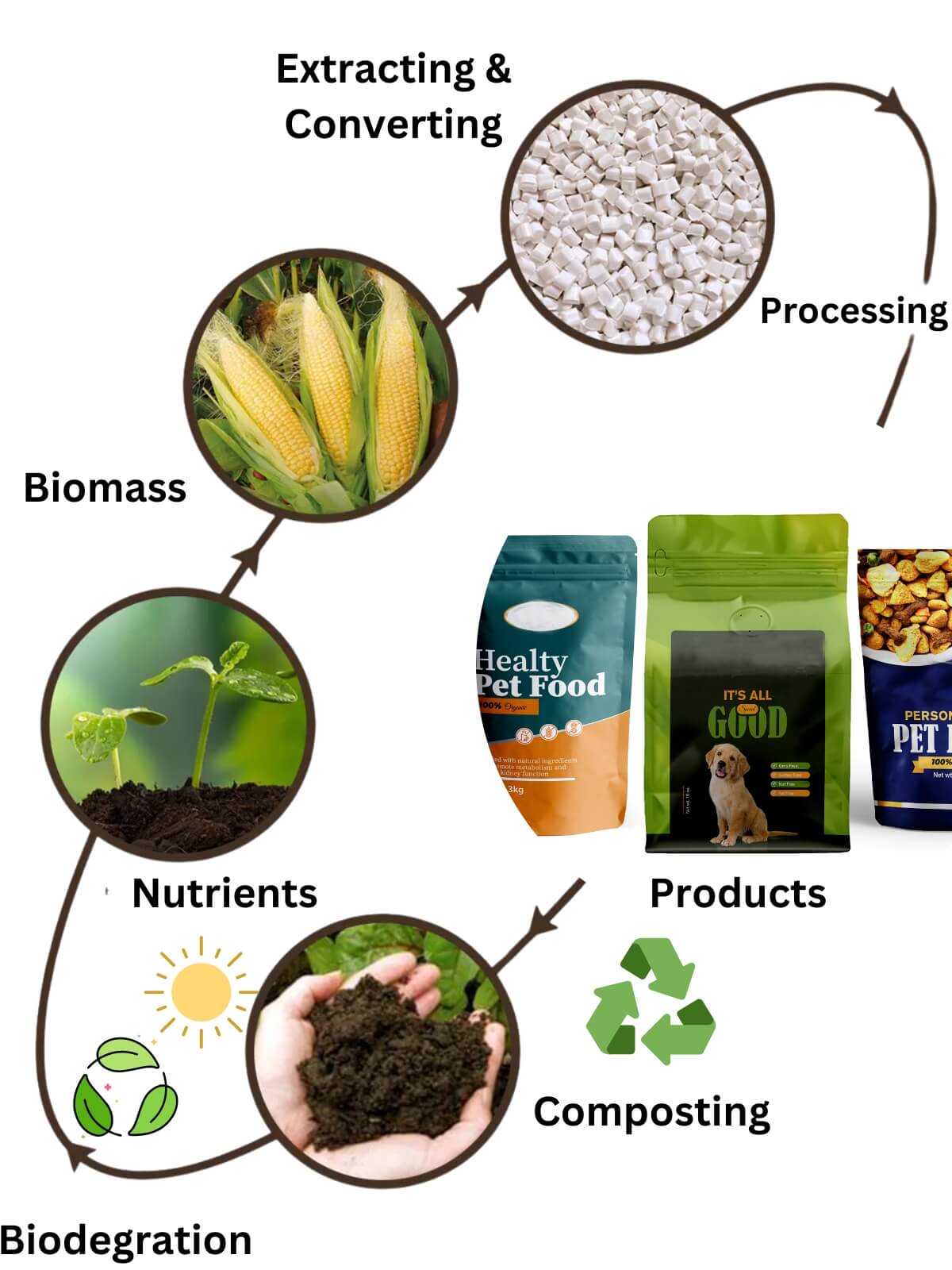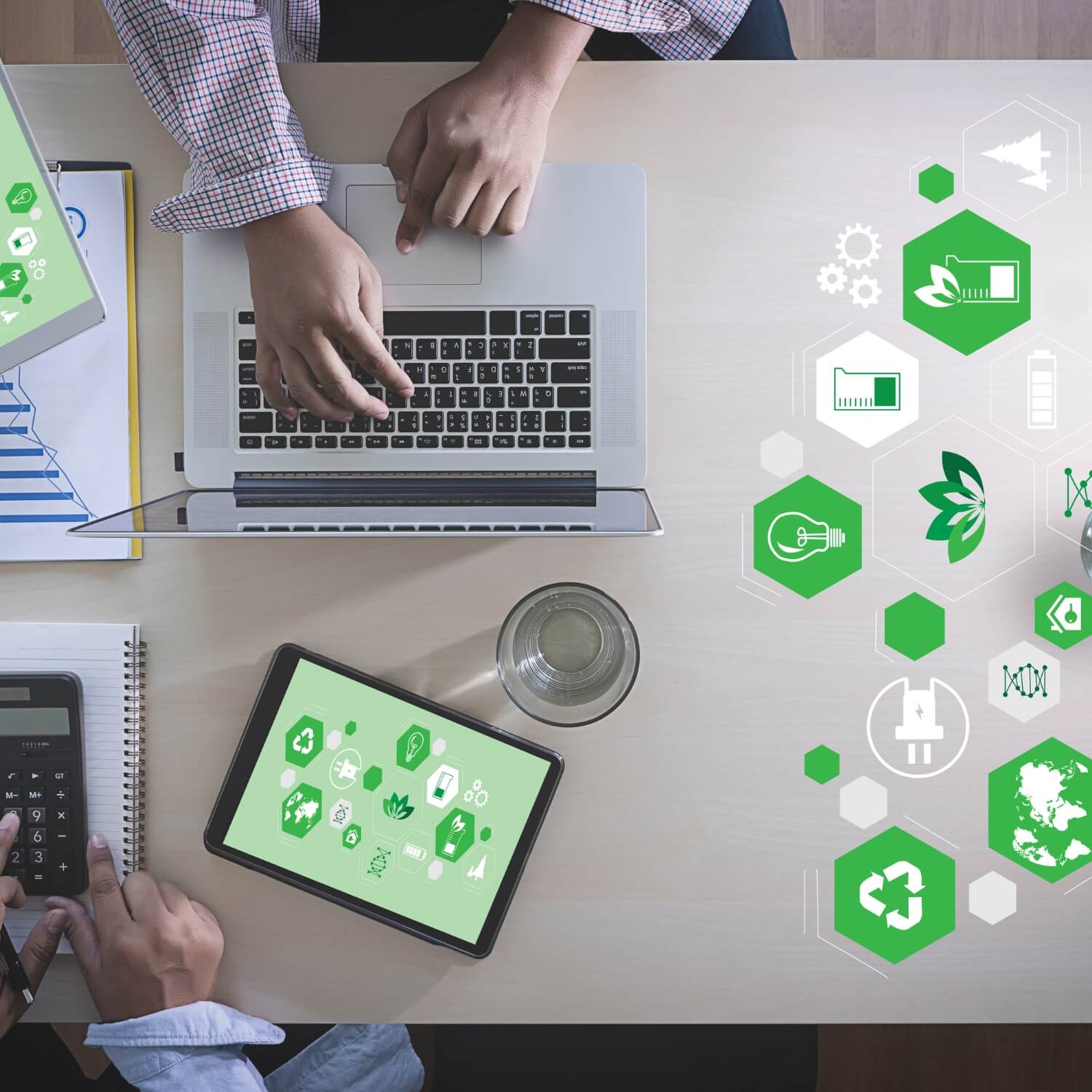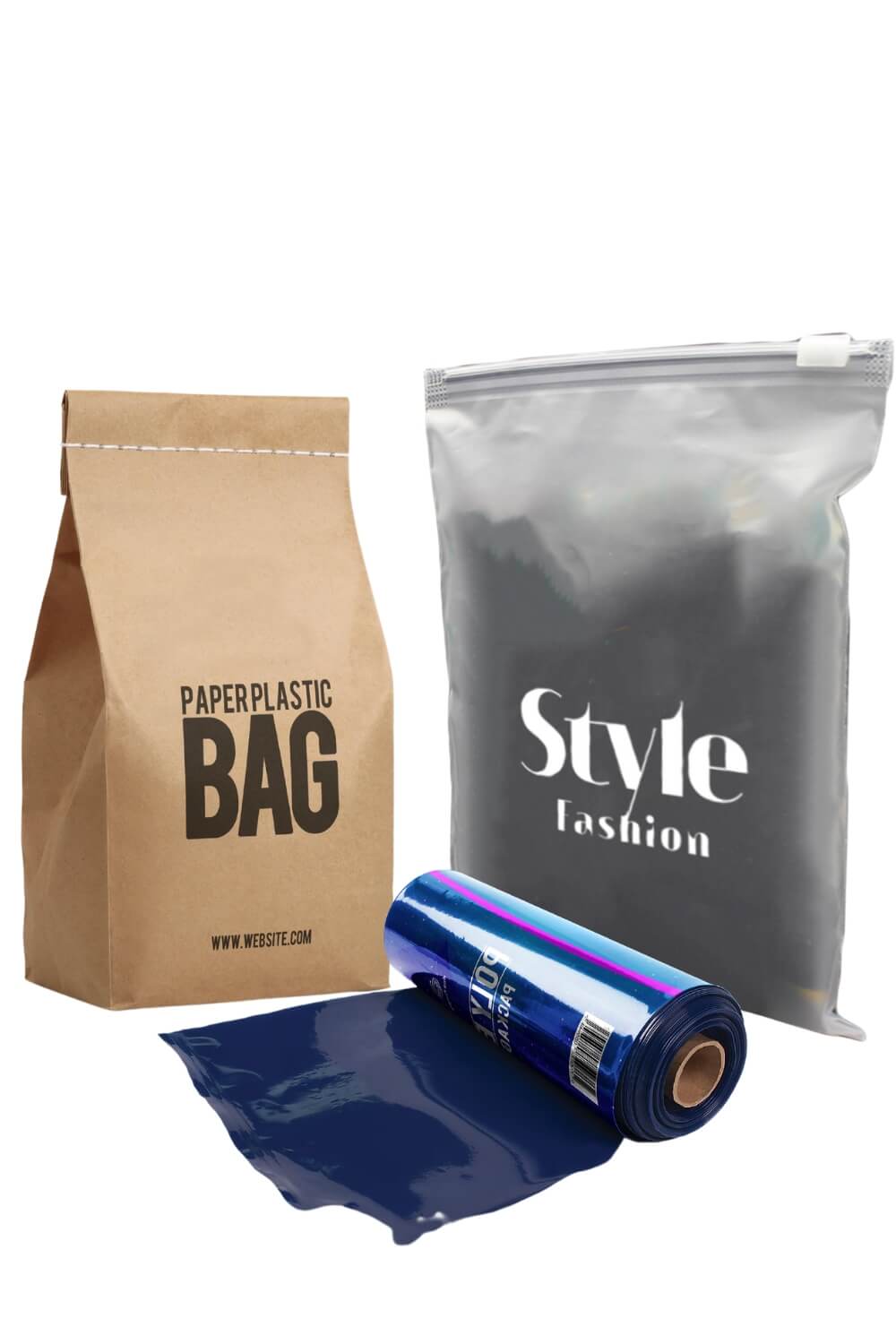
Building a circular economy through packaging is not only good for the environment, it's also good for business. By designing packaging that is reusable, recyclable, or biodegradable, companies can reduce waste, lower costs, and build customer loyalty. By choosing packaging made from sustainable materials. By reduce the carbon emission and green house gases during production stage.We are committed and moving forward to make some impacts to the planet for future generations. Join the movement by working with us toward a circular economy and make your packaging a part of the solution.

Make the eco-friendly choice for your packaging needs with 100% sustainable bioplastics and paper. Not only are these materials fully biodegradable and compostable, but they also reduce the carbon footprint of your packaging and support the growth of renewable resources. Say goodbye to the old way of accumulating plastic waste and hello to a more sustainable future.
Building a circular economy through packaging is not only good for the environment, it's also good for business. By designing packaging that is reusable, recyclable, or biodegradable, companies can reduce waste, lower costs, and build customer loyalty. By choosing packaging made from sustainable materials. By reduce the carbon emission and green house gases during production stage.We are committed and moving forward to make some impacts to the planet for future generations. Join the movement by working with us toward a circular economy and make your packaging a part of the solution.
Make the eco-friendly choice for your packaging needs with 100% sustainable bioplastics and paper. Not only are these materials fully biodegradable and compostable, but they also reduce the carbon footprint of your packaging and support the growth of renewable resources. Say goodbye to the old way of accumulating plastic waste and hello to a more sustainable future.


We make this happen
100%
Sustainable
100%
Compostable
100%
Biodegradable

We create designs that inherently generate a smaller environmental impact compared to traditional fossil fuel options. However, it is important to note that many materials and production methods still contribute to carbon emissions. To accurately assess our own carbon footprint, we have developed an internal use sustainable tracking system that allows us to analyze and comprehend emissions data for various materials and supply chain systems. This information gives us a distinct advantage in quantifying emissions and implementing corrective actions thus minimizing the carbon footprints. Additionally, we support projects that utilize natural methods to effectively absorb and store carbon.
ExploreFrom sustainable materials to innovative designs, our R&D team is working on creating a packaging solution that delivers a better protection outcome and enhances its sustainable value and appeal. We also look into explore new materials and how those new plant based non-toxic sustainable materials can be performed in packaging industry.
ExploreFAQ
Explore some common questions about packaging sustainability and our sustainable capabilities
What packaging materials are sustainable?
Some examples of sustainable packaging materials include:
- Sustainable plastics, such as plant based plastics, bioplastics, and recycled plastics.
- Paper and cardboard, which are renewable and biodegradable
- Glass, which is recyclable and can be used indefinitely
- Metal, particularly aluminum and steel, which are also recyclable and have a long lifespan
- Reusable packaging materials, such as refillable containers and durable shopping bags.
It's important to note that the sustainability of a packaging material depends on many factors including the material's entire life cycle and how it is disposed of.
Pros and cons for choosing over sustainable packaging?
Pros of choosing sustainable packaging include:
-Reduced environmental impact: Sustainable packaging options, such as bioplastics and recycled materials, can significantly reduce the amount of waste and pollution caused by traditional packaging materials.
-Cost savings: In the long term, sustainable packaging options can be more cost-effective than traditional materials as they can reduce waste management costs and help companies meet regulations and consumer demand for eco-friendly products.
-Increased brand loyalty: Consumers are increasingly interested in purchasing products from companies that prioritize sustainability. Using sustainable packaging can help a company differentiate itself from competitors and attract environmentally-conscious customers.
Cons of choosing sustainable packaging include:
-Increased cost: Sustainable packaging options are typically more expensive than traditional materials.
-Less performance: Some sustainable packaging options may not provide as much protection for the product as traditional materials.
-Limited availability: Sustainable packaging options may not be as widely available as traditional materials and may require more effort to source.
Difference between plastics, bioplastics, and paper packaging?
Plastics are synthetic or semi-synthetic materials traditionally made from various types of polymers, such as PVC, nylon, etc. They are typically made from fossil fuels, are non-biodegradable. Some of the plastics like polystyrene are not commonly recycled. It can have a negative impact on the environment.
Bioplastics, on the other hand, are made from or extracted, derived from renewable materials. They are biodegradable, meaning they can break down in the environment and are often considered more environmentally friendly and sustainable than traditional plastics.
Paper packaging, as the name suggests, is made from paper, a natural and renewable resource. It is biodegradable and can be recycled, making it a more sustainable option than traditional plastics.
Is paper more sustainable?
Paper can be more sustainable than other materials, but it depends on how it is produced and used.
Paper products made from responsibly managed forests, using renewable energy and recycling are considered more sustainable than those made from virgin wood pulp. Additionally, paper can be recycled multiple times before its quality is too low for practical use.
However, paper production can be energy-intensive and contribute to deforestation if not responsibly managed. Additionally, if paper products are not properly recycled or disposed of, they can contribute to pollution and waste. Overall, paper's sustainability depends on how it is produced, used, and disposed of.
Shall I switch over to sustainable packaging?
Switching to sustainable packaging can have many benefits, such as reducing environmental impact and potentially saving costs in the long term. It can also help to improve your company's image and attract environmentally-conscious customers. However, it's important to consider the specific needs of your business and any potential logistical or financial challenges before making a decision. You may want to consult with our experts in sustainable packaging by fill in the form below to determine the best course of action.



